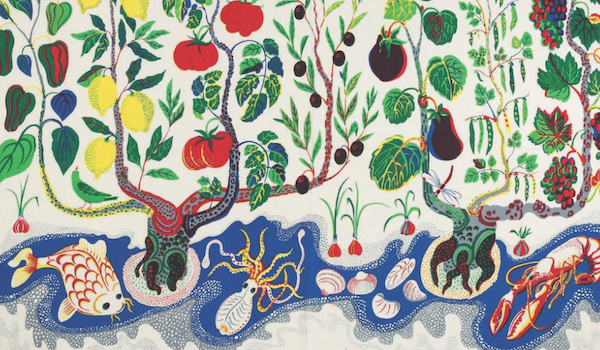
PERENNIAL PRINTS

If you’re visiting Stockholm for the first time and ask the locals where to go, chances are they’ll send you to Svenskt Tenn, one of the must-see shops in the capital. For the Swedes, this legendary furnishings store is a source of national pride but, for the uninitiated, given Scandinavia’s reputation for cool understatement, Svenskt Tenn may come as something of a shock. No minimalist abstracts here. Bold, high-voltage, colour-saturated florals are the order of the day, all created by one man, Josef Frank, up to 80 years ago.

Although Josef Frank is synonymous with Swedish design, he is also something of an anomaly. An Austrian émigré, he was born in 1885 and practised as an architect in Vienna until the age of 48. It wasn’t until 1933 that he moved to Sweden, fearing for his safety because of mounting anti-Semitism in neighbouring Germany following Hitler’s rise to power.

Alongside his architectural work, Frank had also made a name for himself in Vienna as a furniture and textile designer, establishing a successful company Haus und Garten as an outlet for his talents in 1925. Design was pulling in different directions at this time, with the Bauhaus preaching the purist ‘ornament is crime’ dictum, while French artistes-décorateurs revelled in the joys of decoration. Josef Frank bridged these two idioms, designing pared down furniture and uncluttered interiors, enlivened by bursts of pattern in the form of colourful, dynamic block-printed textiles.

Having embarked on his career when Art Nouveau was all the rage, it was natural that Frank should be sympathetic to prevailing decorative trends. The Wiener Werkstätte, a powerhouse of Viennese pattern design established by architect Josef Hoffmann and artist Koloman Moser in 1903, was a formative influence on his aesthetic. The Wiener Werkstätte’s dynamic block-printed dress and furnishing fabrics, produced from 1910 onwards, were refreshingly original and eclectic, with patterns ranging from punchy abstracts to zingy florals. Significantly, Josef Frank cut his teeth by selling textile designs to the Wiener Werkstätte, one of many artists and designers who fed into their collections…
To read this article by Lesley Jackson in full, order your copy of Selvedge issue 74 here.
